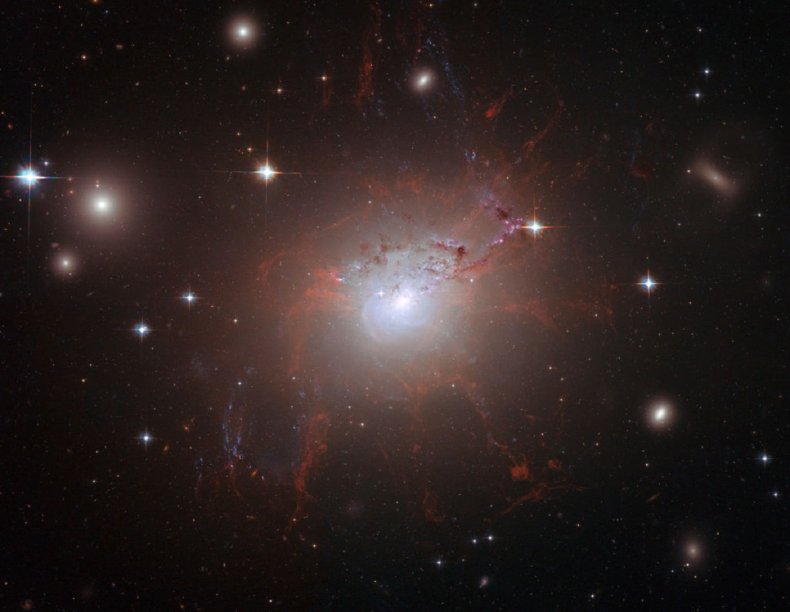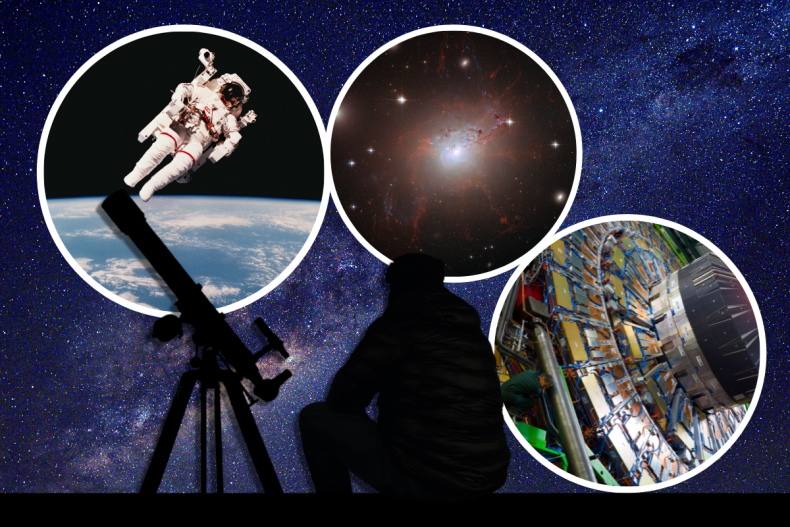Some questions about the universe can quickly stray away from physics and into the realms of philosophy. What was before the Big Bang? Why is there something and not nothing?
Happily some of the biggest unanswered questions in physics can be quite neatly tied up as phenomena not explained by the Standard Model of Particle Physics.
In essence, the Standard Model is the current best theory to explain the most basic building blocks of the universe. It explains that all matter is made up of tiny particles called quarks and leptons and how other particles carry force.
But the Standard Model does not explain everything. It does not explain gravity, nor the phenomena of dark matter or dark energy.
Below are some of the most outstanding and still unsolved mysteries of the universe that the Standard Model has not explained.
Where Is All the Antimatter?
At the start of the known universe there was the Big Bang, an event around 13.8 billion years ago from which all known matter is thought to have sprung.
Scientists think that the Big Bang should have produced an equal amount of matter and antimatter.
An antimatter particle has the same mass as its normal matter counterpart, except its electric charge and some other qualities are opposite. They're produced as a pair, and if they collide, they turn into pure energy and are annihilated.
But today, everywhere scientists look they see a universe almost completely full of normal matter. There is still no adequate theory to explain where all the antimatter went, but experiments have shown that the laws of physics do not apply equally to matter and antimatter, according to the European Organization for Nuclear Research (CERN). Physicists are still keen to find out why.
What Is Dark Energy?
In the 90s, physicists thought that the universe would do either of two things over time: One, it would eventually collapse due to having so much stuff in it; Two, it would keep expanding but its density would cause it to slow down over time.
This is why they were puzzled when observations of distant supernovae showed that not only was the universe still expanding, it was accelerating.
The cause of this acceleration is still unknown. "Dark energy" is really just a placeholder name for whatever the cause is.
Scientists once tried to calculate that dark energy was caused by particles popping in and out of existence, but they came up with a number so big it had 120 zeros and, as NASA states: "It's hard to get an answer that bad."
Some theories from Einstein state that it is possible for more space to just come into existence, and that this space is not empty but actually carries energy—known as the cosmological constant. But it's not clear why this should even be there, let alone why it has the strength it does. Others think an entirely new theory of gravity is needed, but how could such a theory explain this missing piece while also accurately explaining how the planets of the solar system move, for example? The mystery continues.

What Is Dark Matter?
Then there is dark energy's twin, dark matter. Dark matter is needed to explain why stars orbit their galaxies faster than they should, and why light is bent by the gravity of invisible objects.
NASA states that it's better to think of dark matter in terms of what it isn't: We know we don't directly see it, so that rules out stars and planets; it's not dark normal matter, because we would be able to see these clouds absorbing radiation; it's not antimatter, because we would detect gamma rays when this antimatter collides with normal matter; and it isn't large black holes, based on how many gravitational lenses we see.
The prevailing theory is that dark matter is made up of some hypothetical exotic particles.
Scientists think that together, dark energy and dark matter make up about 95 percent of the known universe. Just 5 percent is everything that we can directly observe.
Mike Boylan-Kolchin, associate professor at the department of astronomy at the University of Texas at Austin, told Newsweek: "The limiting factor in researching dark matter is that the only confirmed way it interacts with the rest of the Universe is through gravity, and gravity is really weak on scales where we can do direct experiments.
"We have a few options. We can hope to get lucky in 'direct detection' of dark matter via experiments on Earth, but these are generally aimed at finding very specific candidate particles that have specific interactions with normal matter. These experiments are tremendously sensitive and impressive, but there's no guarantee that any of them are able to detect dark matter since we don't know what it is!"
What Is the Mass of a Neutrino?
Only a couple of decades ago, scientists thought that neutrinos—tiny particles that are everywhere but also extremely hard to detect as they barely interact with anything—had no mass.
Physicists later discovered that they must in fact have mass since they morph into different types of neutrino over time, and they could only do this if mass was involved, according to the Fermi National Accelerator Laboratory's All Things Neutrino website.
Then, scientists in Germany established that there was an upper limit to how much mass a neutrino could have—just over one electronvolt, which is around 500,000 times less than an electron.
But we still don't know exactly how much they weigh. Bryce Littlejohn, a neutrino researcher at the Illinois Institute of Technology, told Newsweek: "We don't even know how much they weigh. This is pretty basic info that we know about all of the other Standard Model particles—even the Higgs boson, which was only first measured a few years ago!
"We know that they have mass, since we've been able to measure neutrino flavor-changing behavior, which is determined by the difference in the neutrino masses, but we don't know the absolute scale of those masses."
And speaking of mass…
What Is Gravity?
Everything in the universe with mass has gravity—a force that attracts other things with mass towards it. The Standard Model does not explain what gravity is, nor does Einstein's theory of relativity.
One aspect of the problem is that all the other forces of nature—electromagnetism and the strong and weak nuclear forces—are quantised. This means they can be observed coming in "chunks," rather than continuous amounts, according to the BBC's Science Focus magazine.
Scientists have wondered if it's possible to develop a quantum theory of gravity that would bring it together with the other forces, but so far this has not been possible.
One theory is that gravity may be delivered in chunks by a tiny particle called a graviton. But these have never been observed.


Post a Comment